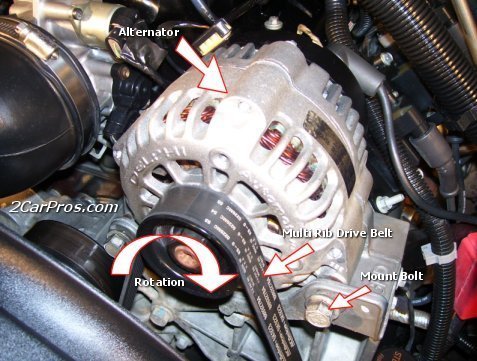Rats. You got ahead of me. I'm going to post these photos anyway for the benefit of others who may research this topic.
First of all, I see the reason for some confusion. The first drawing is of your Power Distribution Center, (PDC), under the hood. I had expected to see the two buss bar studs in one corner, sticking out from the box. In fact, yours are tucked away in the middle, as shown with my purple arrow. You should be able to reach down in there and measure 12 volts on both studs all the time. For your current problem, I suspect you'll find 0 volts.
In the third photo, you did find the bullet connector. I added red arrows to it.
In the fourth photo, you found the fuse link wire. It's common to hide them away as you don't have to access them very often. On the older front-wheel-drive cars from the mid '80s to mid '90s, you'll find a whole bunch of fuse link wires wrapped together in a bundle going around the left front strut tower. The two orange arrows are pointing to the moisture-proof heat-shrink tubing used at the factory. The green arrow is pointing to the fuse link wire itself.
To replace the fuse link, cut the 6 gauge black wire just beyond the heat-shrink tubing on both ends of the fuse link. Strip those back about a half inch. Be sure the copper wires are clean and shiny, otherwise solder won't adhere to them. Cut a piece of the new fuse link long enough to easily connect to the two black wires, and strip those ends. When splicing the joints, it's easiest to not twist the ends together like you would with house wiring and wire nuts. That makes them too hard to seal. Instead, overlap the two ends, and twist them around each other to make a good mechanical connection first, then solder them to make a good electrical connection.
When the first joint is soldered, slide on a piece of moisture-proof heat-shrink tubing, and warm it with a lit match or hot-air gun until the glue oozes out on both ends. Don't try to use electrical tape. That will unravel into a gooey mess on a hot day.
The next step is one we often forget. Slide a second piece of heat-shrink tubing onto one of the wires where it will be far enough away from the heat of the soldering iron. Curl the two remaining wires around each other, then solder them. Before you slide the heat-shrink tubing over the joint, feel for sharp points left from an end of one of the wires sticking up. If you find any, squeeze them down with a needle-nose pliers so they don't poke through the heat-shrink tubing over time. Warm that tubing, and you're done.
The fifth drawing shows the recommended splicing method. I prefer example 2, but that has the greater potential to leave sharp points sticking up that are easy to overlook. With larger diameter wires, some people will take a single strand a few inches long and wind it around the joint to hold it together while they solder it. The method I'm recommending is example three. It's faster and easier.
Images (Click to make bigger)
Thursday, December 31st, 2020 AT 2:37 PM












